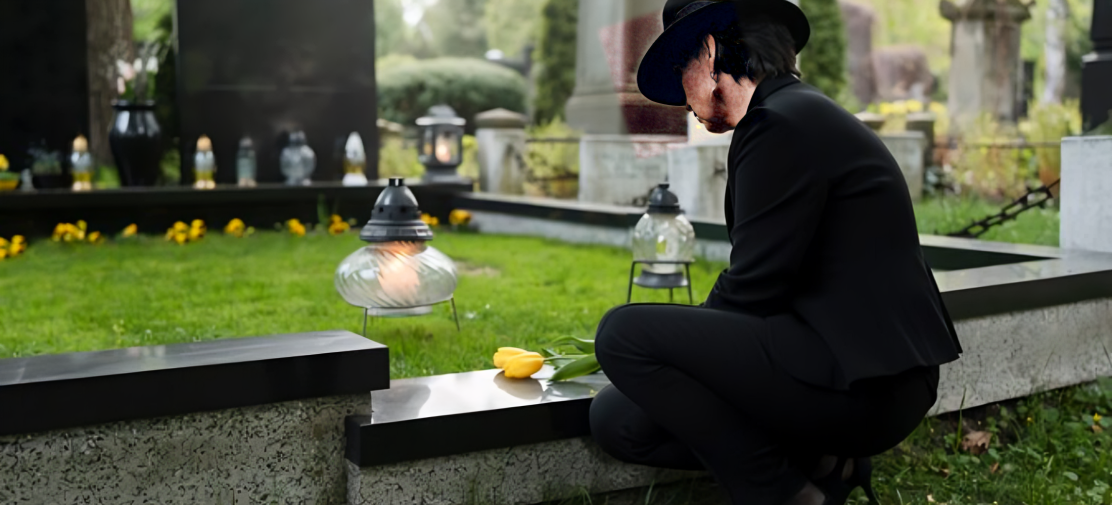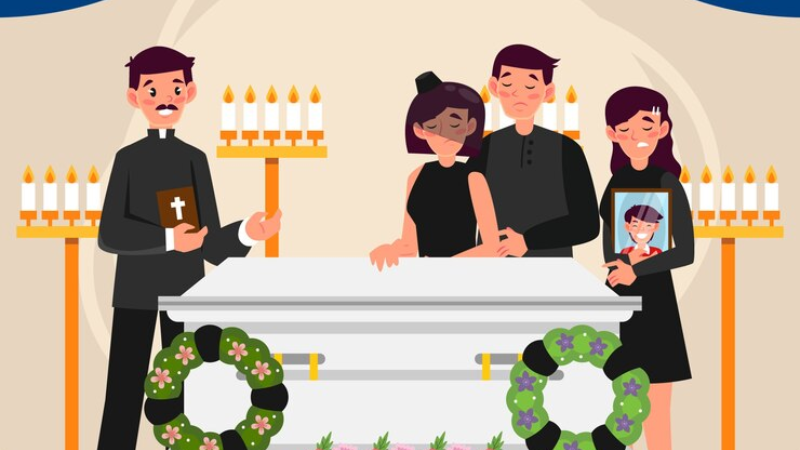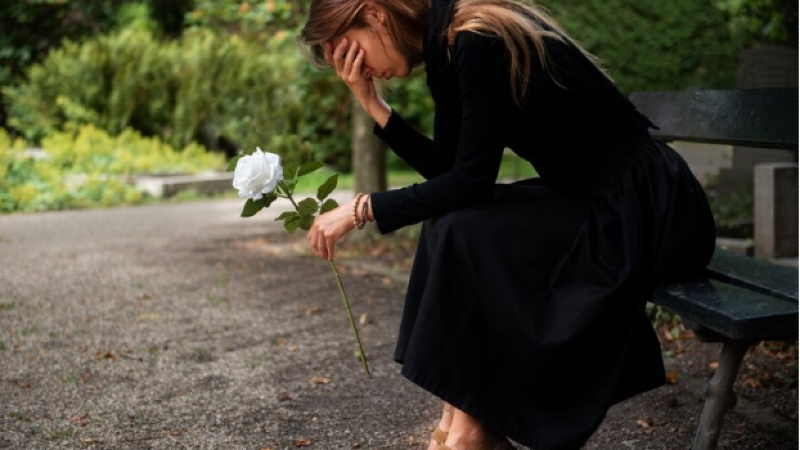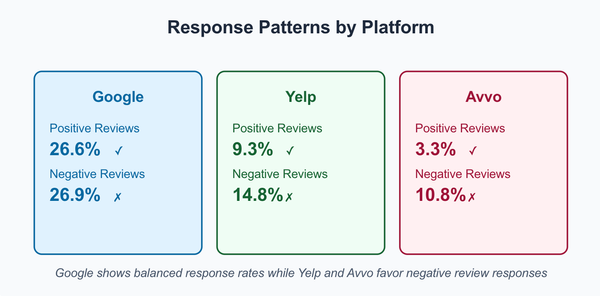Wrongful Death Lawsuits in the United States: Trends and Numbers

Losing a loved one is one of the hardest things anyone can experience. However, when someone else’s actions cause their death, it can make the grief even more difficult to bear. The surviving family members don’t just face financial burdens; they go through the unbearable pain of losing a part of their life.
This is where wrongful death lawsuits come into play. A wrongful death lawsuit is a legal action taken when someone dies due to the negligence, misconduct, or intentional act of another party. Nothing can fill the hole left behind, but wrongful death compensation aims to cover most of the financial expenses and ease the pain a little.
If you or someone you know has experienced such a tragic loss, it’s important to understand how wrongful death lawsuits work in the United States and what trends are emerging in this area of law so you can get the compensation you deserve. Let’s get started!
Key Numbers in Wrongful Death Lawsuits in the USA
Wrongful deaths or unintentional injuries are the 3rd biggest reason for death in the USA. Understanding the scope of wrongful death lawsuits is critical to grasping how prevalent they are and how much they can impact families. Here are some of the latest trends and statistics on wrongful death cases in the USA
- Annual deaths: According to the Centers for Disease Control and Prevention (CDC), approximately 227,039 people die every year due to accidents, injuries, and other preventable causes. Many of these deaths could lead to wrongful death claims.
- Average compensation: The amount of compensation in wrongful death lawsuits varies significantly. On average, settlements in wrongful death cases range from $500,000 to $2 million.
- Motor Vehicle Accidents: Motor vehicle accidents remain a significant concern, with approximately 40,000 reported annually.
- Medical Malpractice Claims: Medical errors are a leading cause of death in the United States, with an estimated 250,000 deaths annually. These cases often lead to wrongful death lawsuits against healthcare providers and hospitals.
- Work-Related Accidents: Workplace injuries are a significant contributor to wrongful death cases in the United States. According to the Bureau of Labor Statistics (BLS), there were 5,283 fatalities in 2019 alone due to workplace accidents.
- Premises Liability Accidents: If someone is fatally injured on another person’s property due to negligence (like poor maintenance or failure to address hazards), their family may file a wrongful death lawsuit. In 2006, there were 234,450 nonfatal and 789 fatal slip-and-fall accidents at private workplaces, with most happening in industrial settings. Additionally, construction site accidents caused 1,239 fatalities in 2006, an increase from 1,131 in 2003.
- Pedestrian Accidents Deaths: Drivers who fail to yield the right of way, drive distracted, or speed can cause fatal accidents involving pedestrians. A study by the National Center for Health Statistics (NCHS) found that 9,188 pedestrians died in traffic or non-traffic incidents in 2022 only.
- Death From Animal Attacks: A recent study published in Wilderness & Environmental Medicine reveals that between 2008 and 2015, there were 1,610 animal-related fatalities in the U.S., with most deaths caused by encounters with nonvenomous animals (57%).
- Defective Products Wrongful Deaths: Many consumer goods, from automobiles to medical devices, can have flaws that result in fatal injuries. From 2017 to 2019, the three-year moving average of estimated consumer product-related deaths in the U.S. was approximately 48,900.
- Criminal Acts: Homicides or other intentional acts leading to death. In 2021, there were a total of 26,031 homicides in the United States, with firearms involved in the majority of these cases (20,958).
Who Can File a Wrongful Death Lawsuit?

Under the state laws of the USA, any surviving family member who suffered losses is directly connected to the deceased. But remember that, in most states, only certain family members are allowed to file a wrongful death lawsuit. These usually include:
- Spouse: The surviving spouse is typically the first person eligible to file the claim.
- Children: Biological or adopted children of the deceased person can file if the spouse is not available or if the spouse is also deceased.
- Parents: If the deceased was unmarried and without children, parents can file a wrongful death lawsuit.
- Siblings: In some cases, siblings may have the right to file, especially if the deceased had no other immediate family.
The specific rules can vary depending on the state, so it’s important to consult with a wrongful death lawyer who knows the laws of your state.
What Damages Are Covered in the Wrongful Death Payout?
When a loved one passes away due to someone else’s negligence or wrongdoing, the aftermath is not only emotionally devastating but can also lead to financial challenges for the surviving family members. Filing a wrongful death lawsuit can provide some relief by holding the responsible party accountable and compensating you for your losses. Here is a simple breakdown of exactly what a wrongful death payout covers.
1. Funeral and Burial Expenses

The cost of saying goodbye to a loved one can be unexpectedly high. Funeral and burial expenses are often included in a wrongful death payout to ease this financial burden. Expenses that may be covered include:
- Funeral service costs
- Burial or cremation fees
- Cost of a casket or urn
- Transportation fees for the deceased
By seeking compensation for these costs, families can focus on grieving and healing without the added stress of financial strain.
2. Loss of Inheritance

When a wrongful death occurs, surviving family members may lose the inheritance they would have received if the deceased had lived a full life. This loss is particularly significant in cases where the deceased was still in their earning years and actively building wealth or assets.
Compensation for loss of inheritance aims to account for:
- The value of financial assets the deceased would have accumulated.
- Investments, savings, and property the family might have inherited.
This ensures that the family is not deprived of their loved one’s financial contributions over time.
3. Loss of Companionship

Loss of consortium refers to the loss of the relationship you had with the deceased. This can include the loss of companionship, emotional support, guidance, and intimacy that the deceased provided to their family members.
The following family members may claim loss of consortium:
- Spouses: For the loss of companionship, love, and intimacy.
- Children: For the loss of parental guidance, nurturing, and support.
- Parents: In cases where they lose a child, they may claim the loss of the bond they shared.
While no amount of money can replace the value of a relationship, these damages recognize the emotional void left behind after a wrongful death.
4. Loss of Future Income

The sudden loss of a family member often means the loss of a primary breadwinner or a significant contributor to the household income. Wrongful death payouts typically include compensation for the deceased’s future earnings, ensuring financial stability for their loved ones.
This calculation may include:
- The deceased’s expected salary or wages over their remaining working years.
- Benefits such as health insurance or retirement contributions.
- Lost opportunities for career growth and promotions.
Courts or insurance companies use factors like the deceased’s age, career trajectory, and life expectancy to determine the value of this compensation.
State Laws Impacting Wrongful Death Claims
Each state in the U.S. has its own laws regarding wrongful death and personal injury claims. These laws can significantly impact how lawsuits are filed and compensation is determined. For example, some states have “survival statutes,” which allow the deceased’s estate to file a claim for damages that would have been available to the deceased if they had survived. Other states impose caps on the damages that can be awarded in wrongful death cases.
Each state sets a statute of limitations for wrongful death suits, determining the time available to pursue legal action. This period varies by state and can be as short as one year or as long as three years from the date of death. Some states may modify their statute of limitations per the cause of death. For example, Colorado increases the statute of limitations to a maximum of 4 years if the decedent was the victim of a hit-and-run accident.
In contrast, if your battle is with a government agency, the statute of limitation will be much less, usually 60-90 days only.
What to Do Next? The Legal Steps to Take in a Wrongful Death Case
If you’re considering legal action, it’s important to understand the steps involved in a wrongful death claim. From seeking legal advice to gathering evidence and preparing for trial, each phase of the process plays a crucial role in securing a fair outcome for you and your family. Here are the key steps to take in a wrongful death case.
1. Seek Legal Advice
These cases are legally complex, and it’s crucial to consult with a professional wrongful death lawyer who specializes in personal injury or wrongful death law. They can provide guidance on whether you have a valid claim and explain the legal process.
Need help to find the best lawyer in the USA? Check out this Lawyers Map and gather important information, including the number of lawyers in your area, their field of practice, and the reviews they got.
2. Gather Evidence
Evidence is essential to prove negligence or misconduct, which is the foundation of any wrongful death case. You should collect all relevant documents, including:
- Medical records: These show the cause of death and whether it could have been prevented.
- Accident reports: If the death was due to a car accident, workplace injury, or any other incident, the police report or accident report is crucial.
- Witness statements: Eyewitness accounts can provide valuable insight into the circumstances leading to the death.
- Financial documents: These help in calculating damages, especially for loss of income or support.
3. File a Claim
A wrongful death claim is usually filed against the person or entity responsible for the death. Your lawyer will file the lawsuit with the legal state governing bodies on behalf of family members. The complaint will detail the circumstances of the death and state how the defendant’s actions led to the fatality. You will also be required to prove that you have a legitimate standing to bring the case, which typically involves being a surviving family member or legal heir.
4. Negotiate a Settlement
The majority of wrongful death cases are resolved through settlement negotiations, avoiding the time and expense of a trial.
Your attorney will negotiate with the responsible party to decide a fair compensation for damages. If a settlement is reached, it may be a faster and less stressful resolution than going to trial. However, the settlement amount outside the court is usually very low compared to what you can get in a trial. So, take advice from your lawyer to decide whether the compensation is fair!
5. Prepare for Trial
If a settlement cannot be reached, the case will go to court. A trial allows both sides to present evidence and argue their case in front of a judge and jury. Your lawyer will collect all necessary documents, including expert testimony, to prove the defendant’s negligence and its direct link to the death.
Your attorney will handle the legal strategies, while you may need to testify if required. After hearing the evidence, the jury will decide whether the defendant is liable and, if so, the compensation amount you are entitled to receive. A wrongful death claim can sometimes settle in a few months, while some cases may take 1-4 years.
Is a Criminal Case Required For Getting Wrongful Death Compensation?

No, a criminal case is not required to obtain wrongful death compensation. A wrongful death lawsuit is a civil case, not a criminal one, and it operates separately from any criminal proceedings.
Based on the incident, criminal and civil cases can be independent. It’s possible for a criminal case and a wrongful death case to be pursued at the same time, but they are separate proceedings. A person could be found not guilty in a criminal court but still be held liable in a civil wrongful death case.
Even if there is no criminal conviction or case, you can still pursue and receive compensation in a wrongful death case if negligence or wrongful actions led to the death.
Top Wrongful Death Case Payouts in the USA
Wrongful death cases in the United States have resulted in significant settlements, reflecting the profound impact of these tragedies on families and communities. Here are some of the top wrongful death settlements in the U.S:
1) Thomas v. Jersey Central
In the case of Thomas v. Jersey Central, the estate of the deceased secured a settlement of $9,425,000. The lawsuit alleged wrongful death, negligent maintenance, utility negligence, and negligent tort against Jersey Central Power & Light Company. The settlement was reached in July 2022. This case is notable among the top wrongful death settlements in the United States for 2022.
2) Piccolo vs. Disney+ Wrongful Death Lawsuit
In October 2023, Kanokporn Tangsuan died from anaphylactic shock at Raglan Road Irish Pub in Disney Springs, Florida. Jeffrey Piccolo, filed a wrongful death lawsuit
Disney initially denied liability, claiming it was merely the landlord of the pub. In August 2024, Disney sought to dismiss the lawsuit, arguing that Piccolo had waived his right to sue by accepting arbitration clauses in Disney+ and My Disney Experience app terms of service. This move faced public backlash, leading Disney to withdraw the arbitration request on August 20, 2024, allowing the case to proceed in court.
3) Panera Bread Wrongful Death Lawsuit
In September 2022, Sarah Katz, a 21-year-old University of Pennsylvania student with a heart condition, died after consuming Panera Bread's Charged Lemonade, a highly caffeinated beverage. Her family filed a wrongful death lawsuit against Panera, alleging misleading marketing and labeling of the drink. In October 2024, Panera settled the lawsuit with the Katz family; however, the settlement details remain confidential. This case was the first of several lawsuits related to the Charged Lemonade, leading Panera to discontinue the beverage in May 2024.
4) Navarro v. Jurupa Unified School District
In the case of Navarro v. Jurupa Unified School District, the family of 15-year-old Cristian Navarro secured a $9,000,000 settlement. Cristian tragically passed away from exertional heat stroke during a football practice on September 28, 2020. The lawsuit alleged negligent supervision, premises liability, and other claims against the school district and its staff. The settlement was reached in March 2022.
5 ) Estate of Guardado v. County of Los Angeles, et al.
In the case of the Estate of Guardado v. County of Los Angeles, the family of 18-year-old Andrés Guardado secured an $8,000,000 settlement. Andrés was fatally shot by Los Angeles County Sheriff's Department Deputy Miguel Vega on June 18, 2020. The lawsuit alleged excessive force, wrongful death, and other claims against the sheriff's department and its deputies. The Los Angeles County Board approved the settlement of Supervisors in November 2022.
6) Robert Middleton Burn Injury Claim
In 1998, Robert Middleton suffered severe burns over 99% of his body due to an assault. He later died from skin cancer, leading to a $150 billion settlement, one of the largest personal injury settlements in U.S. history.
In a Nutshell
Wrongful death lawsuits in the United States serve as a crucial mechanism for holding parties accountable when negligence or misconduct leads to the loss of life. These legal actions not only provide financial relief to grieving families but also highlight systemic issues that may require reform. Understanding the trends and statistics surrounding these cases is essential for recognizing their impact and the ongoing need for legal advocacy.
You don’t have to go through this hard time alone! Hire a professional wrongful death lawyer who can adjust according to your situation and deal with the legal side while you provide support to your friends and family. Sign up and get the legal assistance you require in this sensitive time.





